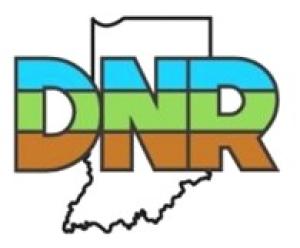
Deer season is back
If you’re a deer hunter, you know the excitement that comes with the first few cold days of fall. Here are a few things you can do to feed that excitement while getting prepared for the season:
- Visit a DNR shooting range to sight in your equipment.
- Use the Where To Hunt map to make a plan for your hunt.
- Familiarize yourself with DNR’s new license system, the Activity Hub, so that you can get into the field without issues. Pro tip: If this is your first time logging into the new system, you will need to verify your personal information.
- Watch this video for instructions on how to link friends and family to your account in the Activity Hub.
Plan ahead for a successful season, and happy hunting!

Waterfowl season is taking flight

From breakfast in the blind to celebrating a limit with your fellow hunters, waterfowl hunting is one of the most social and fun-filled outdoor activities. But do you have your ducks in a row for the season?
DNR has a new license system, the Activity Hub. Getting your account set up early and making sure you have the required hunting licenses, stamps, and HIP registration number will give you plenty of room to troubleshoot, ask for help, or visit a retailer if needed.
To log in:
Go to GoOutdoorsIN.com and click the Login button. You’ll be directed to Access Indiana, where you'll log in or create an account.
Once logged in, you'll be returned to the Hub to verify your personal info, purchase licenses, and apply for reserved hunts.
Need help or have questions? Call: 317-232-4200 or 877-463-6367 or email INHuntFish@dnr.IN.gov.
For a full list of waterfowl hunting dates, regulations, and an outline of which stamps each age group needs, take a gander at the Indiana Hunting and Trapping Guide.
We wish all waterfowl hunters a great season!

Reserved draw hunt applications available
Reserved draw hunt applications are open for gamebird, squirrel, rabbit, deer, and waterfowl hunting opportunities. Hunters may apply for select hunts on DNR public and private lands through Wednesday, Oct. 29.
A $1 tech fee is charged for each hunt application. Before applying, make sure you possess a hunting license that is valid for the type of hunt you’re applying for.
Reserved hunts offer hunting opportunities on lands professionally managed for wildlife. From wetlands teeming with waterfowl to warm-season grass fields alive with gamebirds, these hunts provide top-notch experiences. Don’t miss your chance to secure a reserved draw hunt by applying online today.

It's never too late to learn
Have you always wanted to try a certain outdoor activity, but you didn’t have anyone to show you how to get started? DNR can help by offering a range of beginner hunting and fishing workshops.
These beginner workshops offer a safe environment to learn basic skills and empower you to enjoy a new outdoor adventure on your own. Subjects include basic fishing, squirrel hunting, deer hunting from a ground blind, bass fishing, waterfowl hunting, and more. All questions are great questions as you are guided through a classroom curriculum followed by hands-on learning activities.

County antlerless bag limits reduced in seven counties for 2025-2026
Epizootic hemorrhagic disease (EHD) is a common disease in Indiana deer. Every year DNR receives EHD reports statewide via the reporting system at on.IN.gov/sickwildlife. Some years EHD affects a larger-than-normal proportion of deer and becomes widespread across a region of the state. In response, DNR lowers the county antlerless bag limit in the impacted counties to offset the negative effects of EHD on the deer herd.
This year, a severe EHD outbreak was identified in southern Indiana. In response, DNR lowered the county antlerless bag limits in Bartholomew, Jackson, Jefferson, Jennings, Martin, Scott, and Switzerland counties for the 2025-2026 hunting season.
- Jennings County’s antlerless bag limit will be reduced from four antlerless deer to two antlerless deer for the coming hunting season.
- Jackson, Scott, and Jefferson counties’ antlerless bag limits will be reduced from four antlerless deer to three antlerless deer per county for the coming hunting season.
- Bartholomew, Martin, and Switzerland counties’ antlerless bag limits will be reduced from three antlerless deer to two antlerless deer per county for the coming hunting season.
During the coming winter DNR biologists will evaluate the effects of EHD in southern Indiana and propose bag limit changes to support the health of Indiana’s herd. Any further changes will be applied during the 2026 -2027 hunting season.
Special thanks to everyone who shared reports through the Sick & Dead Wildlife tool this year!

Photo Credit: Gonzalez, Melissa/USFWS
Bowhunting? Become an Archer’s Index volunteer.
If you plan to hunt with archery equipment this year, consider becoming an Archer’s Index volunteer. Bowhunting requires sitting quietly outdoors for long lengths of time, which provides a special opportunity to observe wildlife. You can help make a positive difference on Indiana’s wildlife populations by volunteering to record wildlife sightings while bowhunting from Oct. 1 to Nov. 15. These observations are used by DNR biologists to shape future wildlife management decisions.
After signing up online, volunteers will be mailed a packet with forms and instructions on how to participate.
Learn more and sign up here.

Enhancing fish habitat at Patoka Lake
Improvements are coming to Patoka Lake thanks to the AFTCO x B.A.S.S. Nation Conservation Grant Program! The American Fishing Tackle Company (AFTCO) awarded the grant to Indiana’s chapter of B.A.S.S. Nation to enhance fish habitat in the lake.
The funds will be used to purchase MossBack Fish Habitat structures that will be placed by the end of 2025. Once placed, their locations will be posted on Indiana DNR’s Reservoir Habitat Enhancement Program webpage.
To date, 416 artificial fish habitat structures and 355 shoreline trees have been added to Patoka Lake to enhance fish habitat. The addition of these structures aims to further improve the fishing experience the lake provides for anglers.

A rare find in Morgan County’s West Fork White River
A 4-year-old hickorynut mussel (Obovaria subrotunda) was discovered 14 miles upstream from the former Eagle Valley Dam site. Its presence confirms that shovelnose sturgeon (the species’ required host fish) have expanded their range since the dam’s removal in 2020. That’s a big deal for freshwater mussel recovery!
Hickorynuts, like many native mussels, rely on specific fish to complete their life cycle. Without shovelnose sturgeon, they can’t reproduce. The dam had blocked fish movement for decades, but now, with restored river flow, mussels are hitching a ride to new habitats in the area.
Freshwater mussels are nature’s water filters, removing algae, bacteria, and pollutants to improve water quality. Their return signals healthier ecosystems and cleaner water for wildlife and humans. DNR biologists will continue monitoring fish and mussel populations in the coming years to track this exciting recovery.

Fall is the perfect season for habitat work
Take advantage of great conditions to manage wildlife habitat this fall. As temperatures cool, humidity decreases and soil moisture improves. This creates ideal conditions for prescribed fires, herbicide applications, and soil preparation.
Prescribed fires conducted in early fall thin vegetation and encourage more wildflowers. The autumn months are also the best time for strip disking, planting fall forages like wheat or oats, and installing fire control lines for future use. Be sure to complete any herbicide applications, as many invasive grasses and shrubs are transporting nutrients to their root systems in preparation for winter.
Don’t overlook this beautiful time of year to be outside improving the land for wildlife! Learn how to start by contacting a DNR Wildlife Biologist.
Upcoming events
- Oct. 10: Project WILD: Flocking Together, Indianapolis
- Oct. 12: The Big Sit; Goose Pond FWA
- Oct. 18: Dive into an Immersive Aquatic Adventure: Explore, Learn, Net!, Talon Stream Park (Plainfield)
- Oct. 22: Project WET Workshop: Foundations of Water Education, Martinsville
- Oct. 25: Introduction to Catfish Fishing Workshop, Eagle Creek Park
- Oct. 25: Sandhill Crane Saturdays, Jasper-Pulaski FWA
- Nov. 01: Introduction to Deer Hunting, Atterbury FWA
- Nov. 26: Whooper Wednesday, Goose Pond FWA

Recent news releases
- Bonus antlerless bag limits lowered in seven southern Indiana counties
- Indiana Conservation Officers add public safety divers
- Celebrate National Public Lands Day with DNR, Sept. 27, 28
- Grants available for urban forestry projects
- Outdoor Indiana features Spring Mill State Park renovations
- Indiana tree recognized as the largest of its species in the nation
- Parke Community Rail Trail completes Phase 1
- LARE grants to benefit 18 lake and stream projects news release
- Register now for Community and Urban Forestry Symposium
More
- Buy a license
- Hunting information
- Where to Hunt
- Fishing information
- Where to Fish
- Fish & Wildlife properties
- Donate to help rare and endangered species
About Fish and Wildlife Management in Indiana
Fish and wildlife management and public access are funded by fishing and hunting license revenue and also through the Wildlife and Sport Fish Restoration Programs administered by the U.S. Fish & Wildlife Service. These programs collect excise taxes on sporting arms and ammunition, archery equipment, fishing equipment, and motorboat fuels. The money is distributed among state fish and wildlife agencies based on land size and the number of licensed anglers and hunters in each state. Find out more information about fish and wildlife management in Indiana at wildlife.IN.gov.
